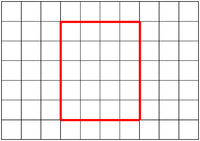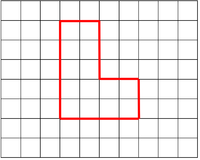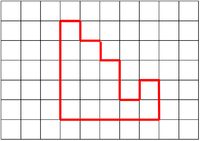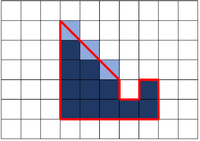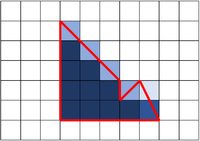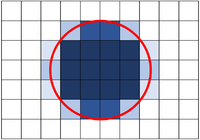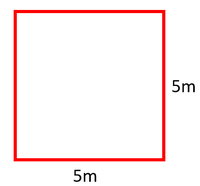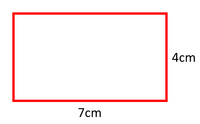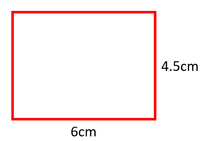Difference between revisions of "Area"
(→Upper Key Stage 2) |
(→About Area) |
||
| Line 45: | Line 45: | ||
: The [[unit]]s of [[area]] are not usually '[[square]]s', they are either [[Metres Squared|metres squared]] (m<sup>2</sup>) or [[Centimetres Squared|centimetres squared]] (cm<sup>2</sup>). | : The [[unit]]s of [[area]] are not usually '[[square]]s', they are either [[Metres Squared|metres squared]] (m<sup>2</sup>) or [[Centimetres Squared|centimetres squared]] (cm<sup>2</sup>). | ||
: The [[area]] of a [[rectangle]] or a [[square]] can also be found if the length of the sides is known. | : The [[area]] of a [[rectangle]] or a [[square]] can also be found if the length of the sides is known. | ||
| − | : To find the [[area]] of a [[rectangle]] or [[square]] [[multiply]] the [[base]] by the [[height]]. | + | : To find the [[area]] of a [[rectangle]] or [[square]]; [[multiply]] the [[base]] by the [[height]]. |
{| class="wikitable" | {| class="wikitable" | ||
Revision as of 10:54, 26 March 2019
Contents
Lower Key Stage 2
Meaning
Area is the size of a surface.
About Area
- If a rectilinear shape is drawn on a grid the area can be found by counting the number of squares inside the shape.
| The shape has 20 squares inside it, so the area is 20 squares. | This shape has an area of 14 squares. | This shape has an area of 15 squares. |
Upper Key Stage 2
Meaning
Area is the size of a surface.
About Area
- If a rectilinear shape is drawn on a grid the area can be found by counting the number of squares inside the shape.
| The shape has 20 squares inside it, so the area is 20 squares. | This shape has an area of 14 squares. | This shape has an area of 15 squares. |
- If an unusual shape is drawn on a grid the area can be estimated. The answer will not be exactly correct, but it will be close.
| This shape has 12 full squares and 3 half squares. So the area is 12 + 3.5 = 15.5 squares. | This shape has 10 full squares, 2/3 of a square, 4 half squares and 1/3 of a square. So the area is 10 + 2/3 + 4 + 1/3 = 15 squares. | This circle has 12 full squares, 4 nearly full squares, 4 nearly empty squares, 6 half squares. The area is difficult to estimate but it is around 19 squares. |
- The units of area are not usually 'squares', they are either metres squared (m2) or centimetres squared (cm2).
- The area of a rectangle or a square can also be found if the length of the sides is known.
- To find the area of a rectangle or square; multiply the base by the height.
|
\(area = base \times height\) \(area = 5 \times 5\) \(area = 25m^2\) |
\(area = base \times height\) \(area = 7 \times 4\) \(area = 28cm^2\) |
\(area = base \times height\) \(area = 6\times 4.5\) \(area = 27cm^2\) |
